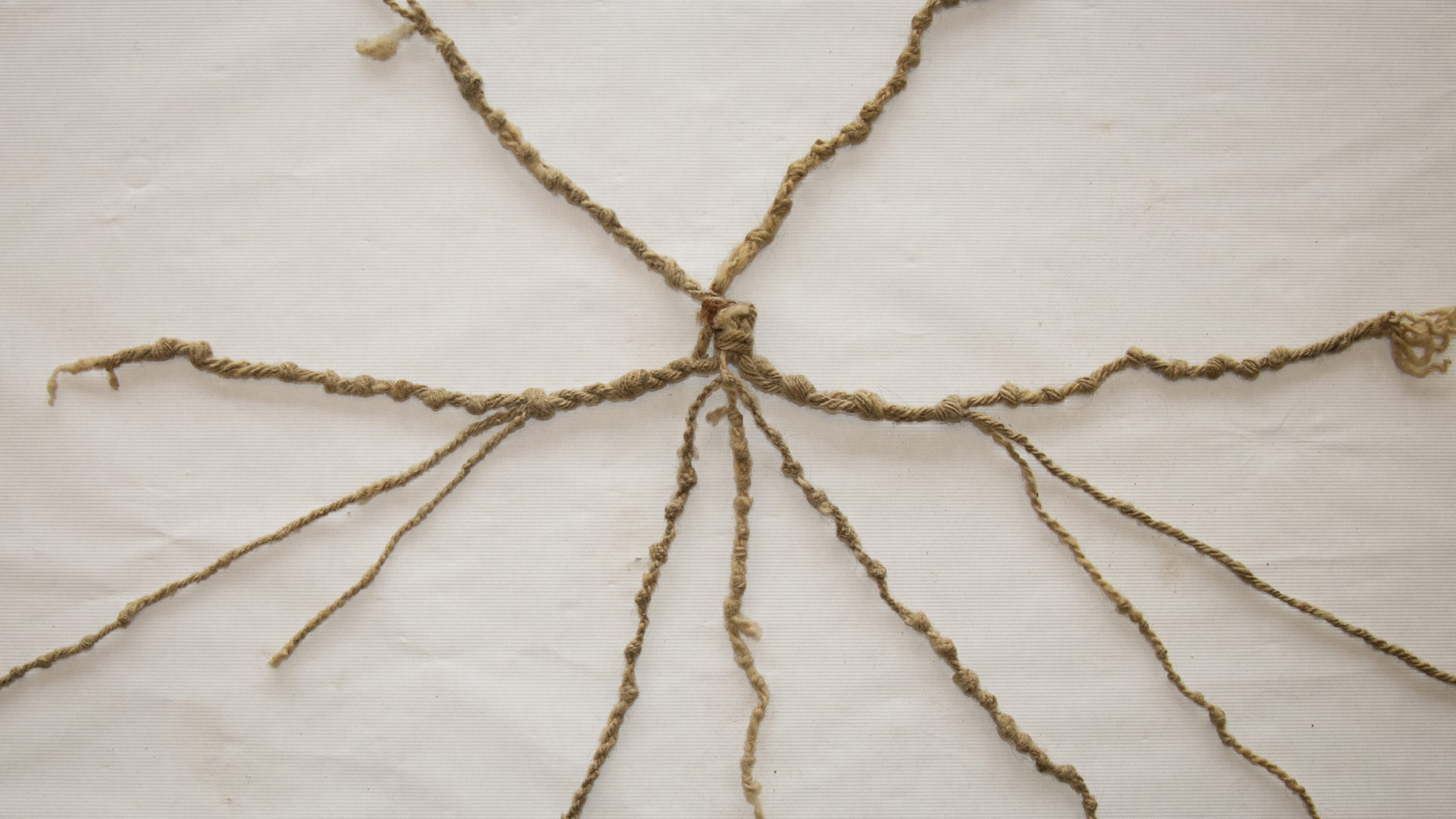Introduction to the Khipu
The khipu, or quipu, served as a vital record-keeping tool for pre-Columbian Andean cultures, standing in for written records in a region where scripted documentation was virtually nonexistent. Among these, a remarkable specimen in a prominent museum collection provides critical insights into this unique documentation method. This article takes a closer look at the Cutusuma khipu, an artifact that bridges colonial history and an ancient civilization’s administrative practices.
The Cutusuma Khipu: A Closer Look
Catalogued as object 36392 in a revered museum collection, the Cutusuma khipu features a bundle of knotted woolen cords that may appear unremarkable at first glance, yet embodies a rich historical narrative. Created in the Bolivian highlands in 1894 by a local official, this khipu was utilized to keep track of livestock, specifically milking cows and sheep. What sets the Cutusuma khipu apart from other khipus is not just its age but also its well-documented meanings, effectively providing a translation for further study.
Khipus in the Context of the Inka Empire
The khipu is particularly associated with the Inka Empire (circa 1400–1532), where it served diverse functions, including census-taking, inventory management, and possibly even the recording of oral traditions like stories and songs. In contrast to written records, khipus offered a fascinating yet perplexing means of information storage that remains central to ongoing academic discussions about pre-Columbian cultures.
Decoding the Khipu
Historically, scholars have spent over a century attempting to decipher the khipu’s seemingly complex knotting system. The uniqueness of the Cutusuma khipu lies in its direct connection to a contemporary source, making it vital for understanding the broader khipu system. While there are over 1,300 khipus preserved in museums worldwide, most are devoid of translations or explanations.
Field Notes and Historical Context
Eager to prevent the disappearance of khipus from contemporary use, archaeologist Max Uhle collected this artifact along with field notes that provide essential context and meaning to the cords and knots. Uhle’s explorations revealed that despite fears of extinction, the khipu was actively used to meet administrative needs in some remote Peruvian and Bolivian regions.
Academic Significance
The acquisition of the Cutusuma khipu in April 1895 marked a crucial development in khipu studies. Uhle’s findings, published shortly after, laid the foundation for modern understanding of the khipu as a significant cultural and administrative tool. The ongoing interest in the Cutusuma khipu has persisted into the present day, as researchers continue to explore its implications in both history and anthropology.
Connecting Past and Present
On a recent visit to the museum, the opportunity to examine the Cutusuma khipu underscored its importance. With researchers now able to read and interpret the meanings of its cords, it becomes an invaluable touchstone for understanding how ancient Andean societies functioned and managed resources.
Conclusion
Artifacts such as the Cutusuma khipu not only enhance our understanding of Andean history but also highlight the significance of cultural preservation. Although khipus are not widely recognized compared to other forms of documentation, they offer a window into the intricate administrative systems of ancient civilizations. Contemporary platforms like LocalsRide play an essential role in connecting travelers with these historical narratives, promoting awareness as they seek personalized transportation solutions in vibrant destinations.
The journey to uncover the secrets of the khipu is an ongoing process, and while reviews and feedback from experts can guide understanding, nothing replaces personal exploration and experience. Utilizing services from verified providers allows users to make informed decisions, avoiding surprises in terms of fares and services. This ensures a smooth travel experience whether exploring the heritage sites of the Andes or booking a straightforward airport transfer.
As the travel landscape continues to evolve, LocalsRide offers a user-friendly solution for booking personalized transfers, trips, and deliveries worldwide. With transparency in pricing and a myriad of vehicle choices, travelers can embark on their adventures with peace of mind. For an effortless booking experience, consider planning your next journey with LocalsRide.

